While I was in Singapore for my holiday, I had a good look at the MRT, and I wanted to specifically post about the MRT’s elevated sections.
I’m not the only one to ponder a comparison to the proposed Dandenong line skyrail… Channel 9 recently featured this story, which is worth a look:
.@andrew_lund speaks with the people who live next door to Singapore's Skyrail. Here's what they had to say. #9News https://t.co/v8ioUAPcgT
— Nine News Melbourne (@9NewsMelb) May 18, 2016
Apparently about 30% of the Singapore rail network is elevated. Most of the rest seems to be underground; I didn’t explore all of the network, but I didn’t see any ground level lines; it was either above or below.
The network has only been built since the 1980s, so it’s not like Melbourne where some sections of elevated rail have been there for a century — eg around Glenferrie, Balaclava, Collingwood and other inner suburbs.
That said, in some areas of Singapore, the rail line came first, before surrounding development. In others, it was inserted into existing suburbs.
Of the initial lines authorised in 1982, the plan was for 42 stations, of which 26 were planned to be elevated. With a current focus on more lines through the central city area, some of these have been all underground, but other suburban line extensions and stations continue to be built as elevated.
How does it look? Here’s a short video:
Elevated structures and trains
In most cases they seem to have designed each individual track on its own structure. Melbourne is planning this too, to maximise the amount of light and rainfall that can benefit flora below.
A key difference is that Singapore trains are powered by third rail, so there is no overhead wire and stanchions as we will need in Melbourne. This reduces the overall visual impact when trains aren’t passing. (Singapore does have a high speed rail line to Malaysia planned; this will have overhead electric power, but I’m not sure if it will have elevated sections.)
Singapore has no diesel passenger or freight trains, though they do use diesel powered maintenance trains.
Looking around Redhill, just east of the station the train goes underground, and the clearances here over parkland weren’t particularly high. On the other side of the station, double decker buses could get under the track, so I assume it meets some kind of minimum standard.
Melbourne’s planned elevated lines are planned to be much higher than the standard 4.3 metre road clearances, partly to allow more light, and also presumably to be clear of the existing tracks they are replacing, to minimise service disruptions during construction.
Parkland
At Redhill, there is parkland around the station. A few hundred metres away is high-rise residential (common in Singapore, but quite unlike most Melbourne suburbs).
It was Sunday, and in the park I actually saw one group having a picnic very close to the rail line. Other groups were using the park nearby. Evidently the trains are just accepted; it doesn’t stop people making use of the space.
There was no litter and no graffiti on the concrete structures. But the whole of Singapore is like that.
It may have been clean, but I’d have to say it didn’t look beautiful — unless perhaps you’re a fan of concrete.
In this location, apart from growing grass underneath, little had been done to beautify the area. Plain concrete and (on parts of the station structure) metal and glass. It was a similar case at other stations I saw: functional but not beautiful.
They do better if they try. Elsewhere in Singapore, murals and tree planting has occurred to minimise the visual impact of rail construction.
Notable at Redhill was a playground underneath the tracks. Nobody was using it when I went past; signage indicated it was a private playground linked to nearby condominiums.
Stations
As far as I saw, Singapore station design (whether elevated or underground) is almost universally island platforms. This is particularly useful at terminal stations where the next train departing might use either side. It also makes better use of space when coping with tidal peak loads.
At all the stations they seem to provide full rain coverage (they’re dealing with tropical weather, remember, but this would benefit Melbourne too on rainy and stinking hot days) and platform screen doors (which were retrofitted last decade). Fans were fitted to many station ceilings to provide some level of cooling.
Access to/from the platforms was mostly by escalator, with lifts and some stairs also provided.
All stations appeared to be staffed, with station offices and fare gates at ground level. There was rarely a staff presence on the platforms, though CCTV was common.
The concourse levels generally were pretty open, maximising visibility, with retail such as convenience stores. Some stations had other small retail outlets built into them. Toilets seemed to be provided at all stations.
No stations that I saw seemed to have any car parking at all – in Singapore, cars are an expensive status symbol, not a virtual necessity as they are in many Australian suburbs.
Bus interchanges and bike parking were prominent. The distance from the station entrances to the bus stops varied – for some only a short walk, for others a bit longer.
Not that it seemed to matter; the bus/train combo seemed very popular, though given surrounding residential towers, I’d bet the majority of passengers walk to the station. (They do in Melbourne too.)
Development around elevated lines
At Redhill there were roads and parklands providing a buffer between the railway line and nearby residential towers.
But at the eastern end of the line between Tanah Merah and Pasir Ris it’s a different story – a mix of high-density residential towers and medium-density houses – a fair way from the suburban density common in Melbourne suburbs, but closer to it. And many of those homes are very close to the railway line, separated only by a walking path, similar to that planned for the Dandenong skyrail.
In these sections there is some use of privacy screens, though it’s not universal. Where they are in place they seem quite effective at blocking the view to the immediate area.
Pasir Ris station is a terminus. Beyond the platforms at ground level is a bus terminus and bus parking, but the tracks actually extend beyond this, providing a small amount of stabling. This extends across a road into a nearby park, with maintenance cranes at the very end of the track.
It looked like a bit of an odd addition to the park; none of this was in use when we were there; I wonder how often it gets used?
Conclusion
At first glance the Singapore designs are far more similar to the proposals for the Dandenong line than the existing Melbourne elevated rail sections, which tend to be embankments with little or no access underneath.
There are key differences of course; Singapore has no overhead wires and no regular diesel services.
Singapore also has little serious political opposition to the government — in the current parliament the government holds 83 of the 101 seats. This is obviously quite different in Melbourne.
That said, in Singapore they can’t get away with anything — I was told there is a lot of political pressure around train crowding. But they probably have more leeway to push through projects that negatively affect a minority of people, as long as the majority benefit. In Melbourne this is a much harder sell.
And certainly the older Singapore elevated rail sections aren’t beautiful. For it to work in Melbourne, it needs to be much better than this.
Lots of other cities have elevated rail (including Melbourne), and some of it is quite new. To claim it is outright “the wrong way” to grade separate level crossings is, in my view, completely wrong.
The trick for Melbourne will be for the government to ensure the project lives up to its promises: to minimise construction disruption, minimise tree removal, reduce train noise, ensure resident privacy, prevent vandalism and graffiti (a far harder task than in Singapore) and deliver the best project possible…
And politically, they need to show the broader community the benefits of getting this done — the reduced delays to motorists, pedestrians, cyclists, buses, emergency vehicles, and the increased rail capacity it can bring — before the November 2018 election.
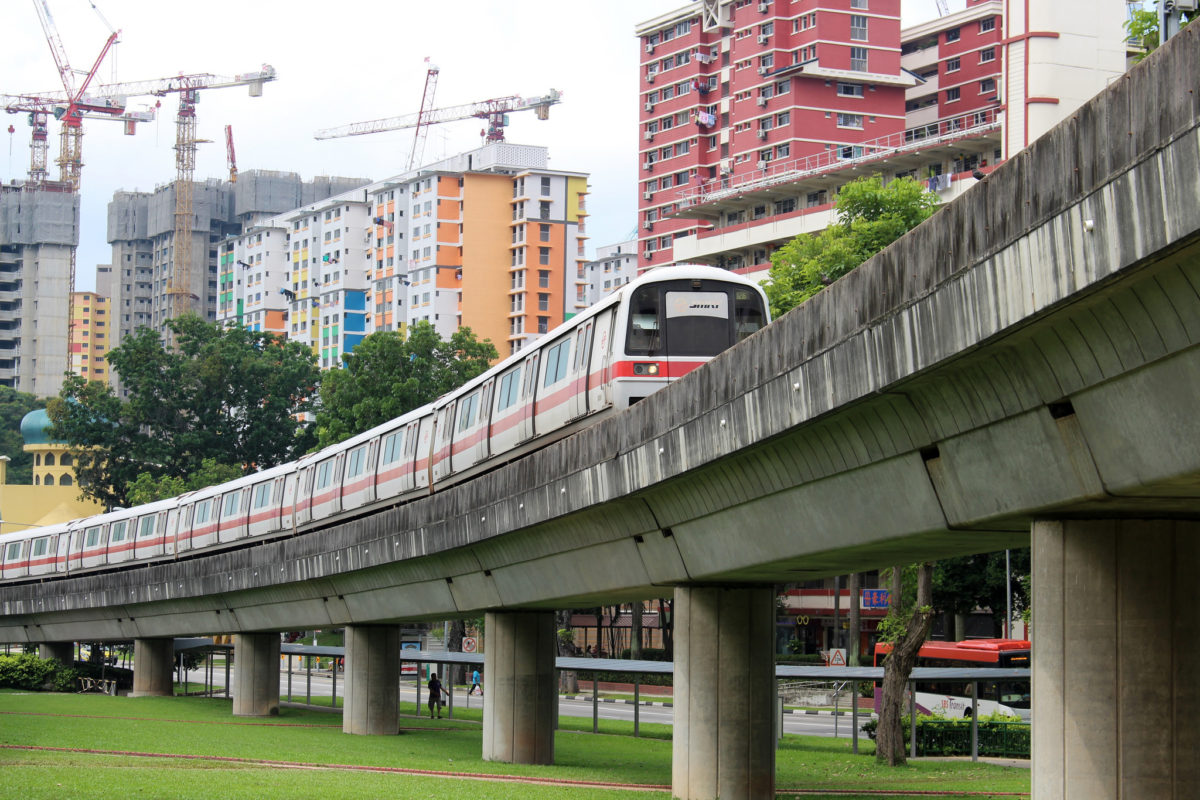


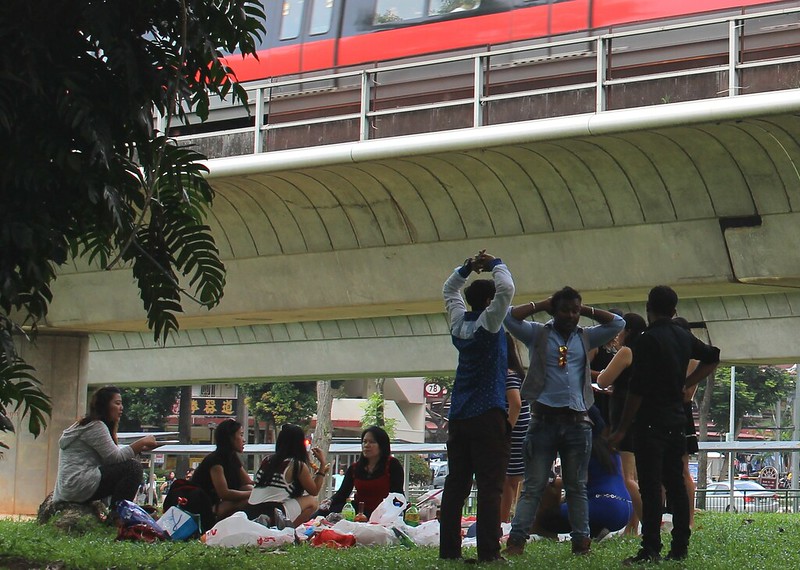

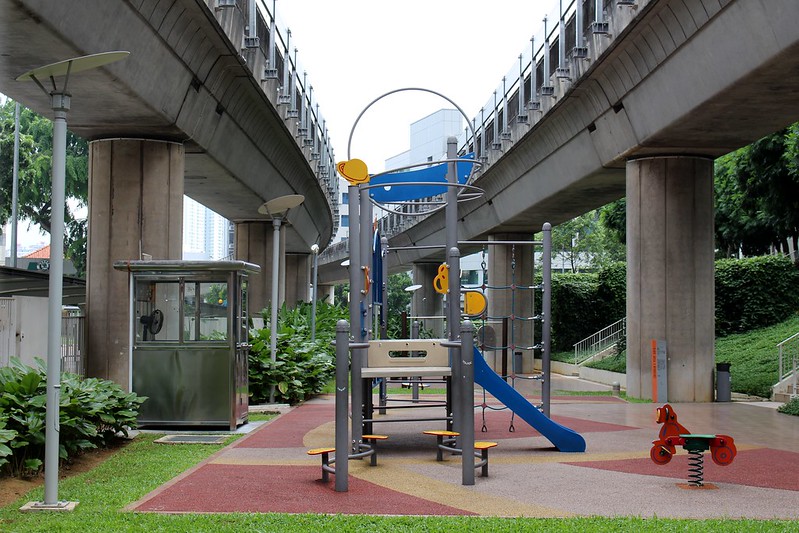
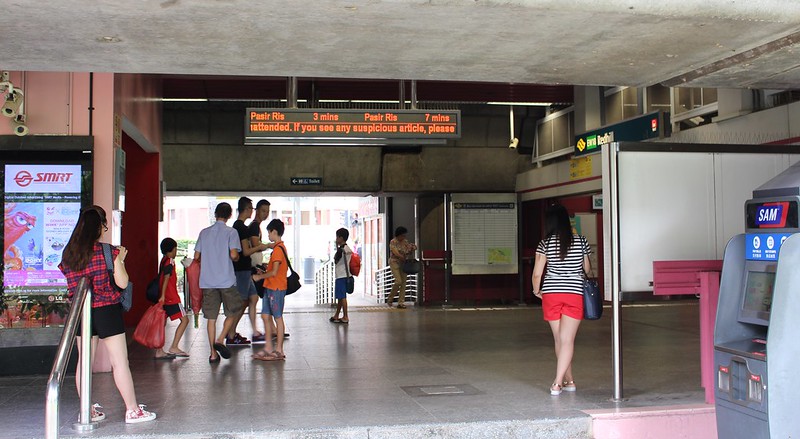

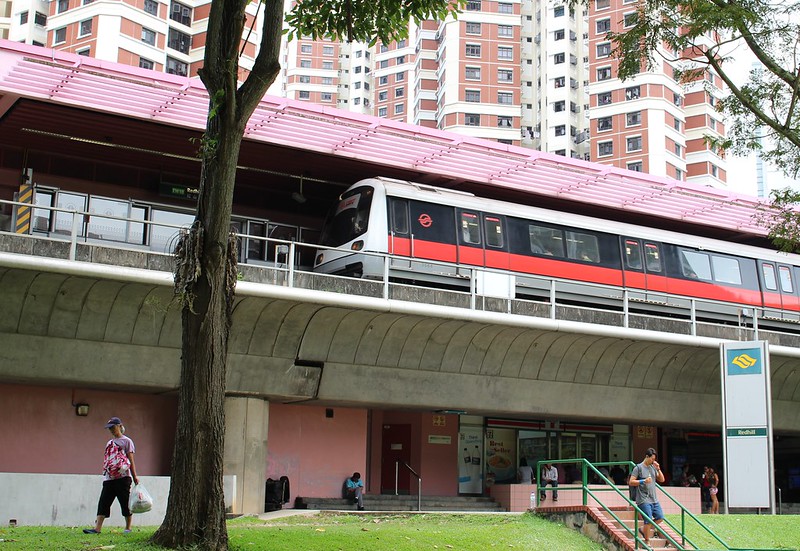

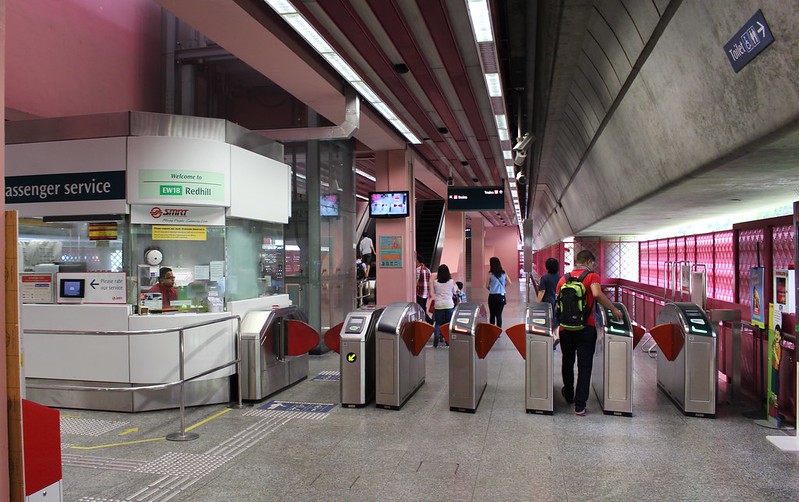
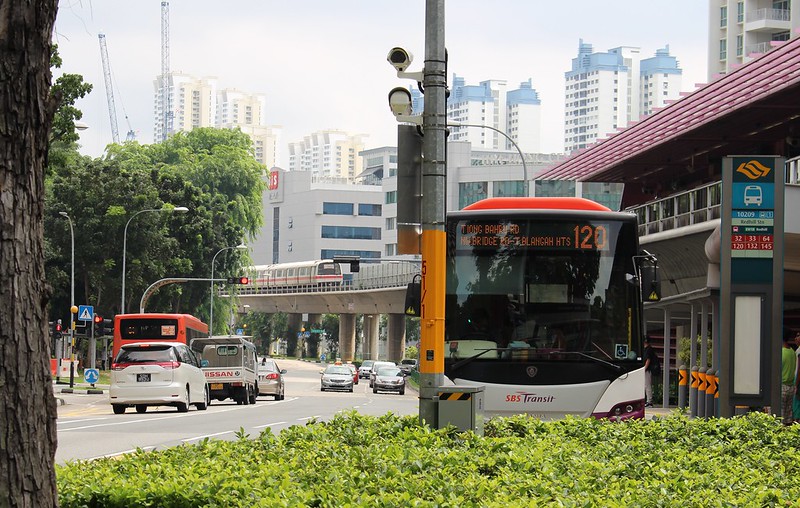
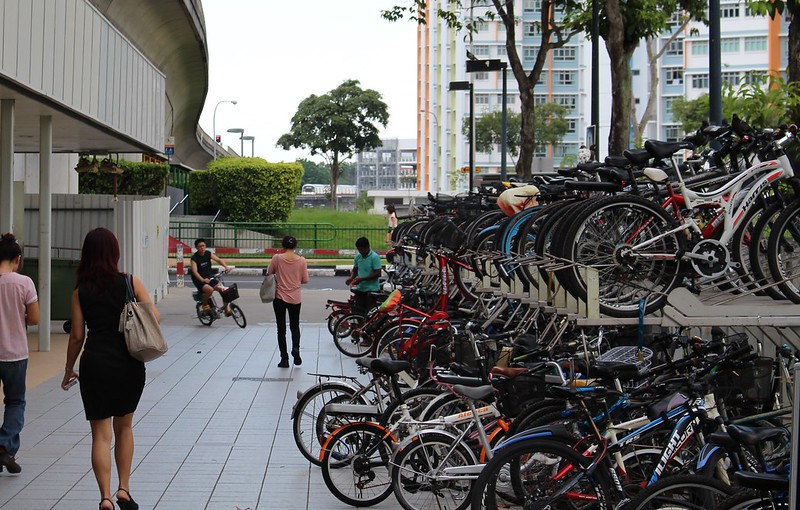
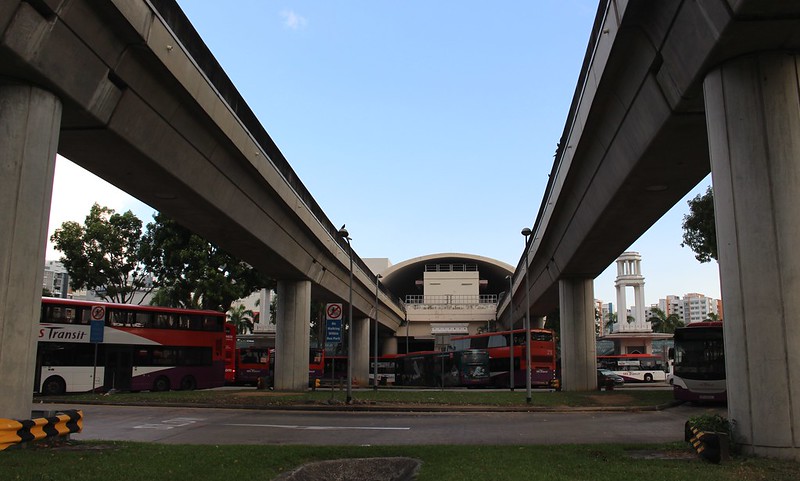
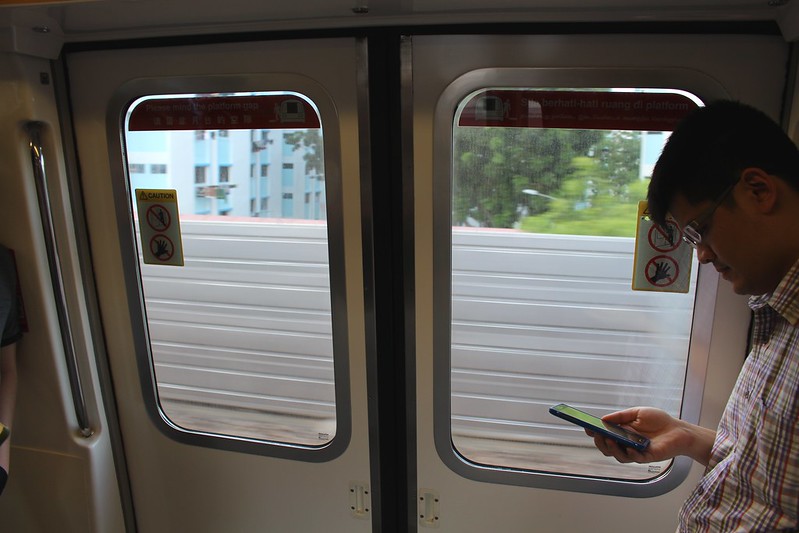

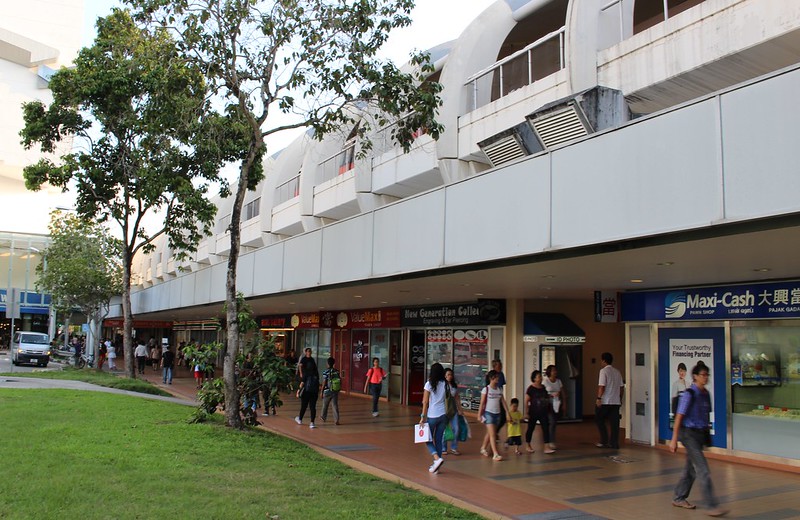
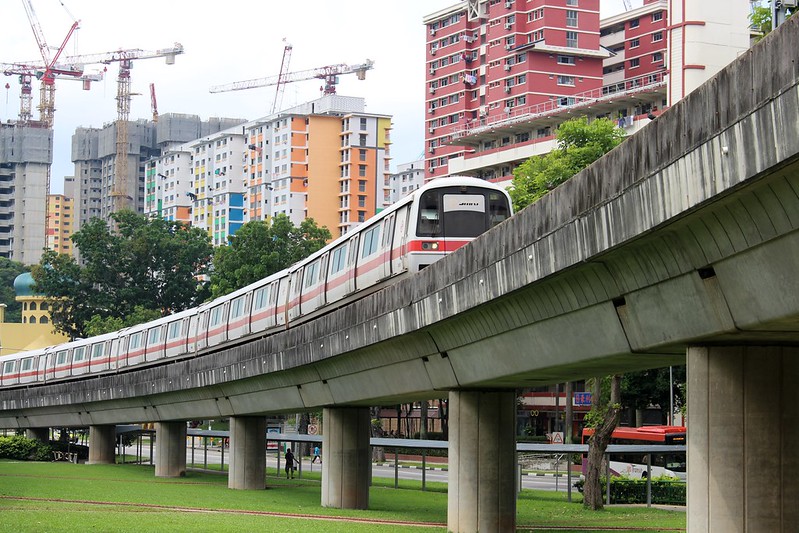
18 replies on “What can Melbourne learn from Singapore’s skyrails?”
Daniel, yet again I find your blog very interesting educational reading – I assume that because our SkyRail will be much higher than that in Redhill, the actual noise level will be less (also of course the vast number of improvements in tracks etc since Singapore was built in the early 1980’s.
I also beg the question why is vandalism & graffiti far less a problem in Singapore – are the fines much higher? and is it policed much more vigorously?
Another informative and entertaining summary. Thanks.
I guess the anyone caught spray-painting infrastructure in Singapore is dealt with very harshly.
From my observations, I’d say bus transfers probably make up greater passengers than just walkup – especially as the stations are often not that well integrated with surrounding areas (a lot of parkland and road infrastructure separates stations and destinations), and the fact that the vast majority of places are located beyond walking distance from stations.
Buses also carry 3.7m passengers a year, compared with about 2.7m on the MRT, so I would not be surprised at all.
The elevated rail network I know best is that of Berlin (where parts of both the S-Bahn and U-Bahn are elevated). It’s not directly comparable to what’s being proposed in Melbourne – but certain parts are brilliant. In particular the central east-west S-Bahn axis is elevated on a structure of vaulted yellow brick arches all the way from the Westkreuz to Ostkreuz. Or at least, it was originally – parts have been lost through things like building the new Hauptbahnhof. The vaults under each arch are numbered from one end of the city to the other, many being home to restaurants, shops, bars and nightclubs… One of the most interesting structures in a city of many interesting buildings.
Oh, and anyone who wants to see firsthand the problems building underground through sand with a high water table needs to visit also. The U5 will have taken nearly 20 years to build about 4km of underground tunnel (including a hiatus of numerous years when the city ran out of money). The whole of Berlin is decorated with pink pipes trying to keep the groundwater out of everything.
Thanks again. That is quite an eye opener. As I know very little of the Singapore network, it informed me quite a bit.
Did you see any of the lines which went through buildings?
Also, re grafiti, I do not know the official punishment for this, but know Singapore is very strict. If you spit, or drop rubbish the punishment can be harsh.
RE, the 9 news article. Sorry, due to technical issues, I could not hear that item.
Could somebody please provide a transcript, or just a breif summary would be great?
The safety-correctness-weevils’ concerns for things like evacuation pathways for wheelchairs will result in overhead structures much larger and visually unattractive than those in Singapore.
enno
>The safety-correctness-weevils’ concerns for things like evacuation pathways for wheelchairs will result in overhead structures much larger and visually unattractive than those in Singapore.
The Singapore system too provide for disabled access and require evacuation access.
We can’t let Sydney do something we are not!! The goven’t spin doctors should seize this opportunity/marketing – us v them – works every time :)
Admittedly, the video(s) show greenfield sites, but this should encourage/promote/give acceptance to sites like Mernda.
I think Hong Kong’s West Rail is much closer to what’s being proposed for the Dandenong line in looks: https://goo.gl/maps/UP7e5rUDpzA2
I recall at the time it was being built, it was boasted as “one of the world’s quietest elevated rail”: http://www.railway-technology.com/projects/west_rail/west_rail6.html
>I think Hong Kong’s West Rail is much closer to what’s being proposed for the Dandenong line in looks: https://goo.gl/maps/UP7e5rUDpzA2
Wow, that would look good if we have another rail line over the Yarra from the West looking like that.
@Daniel
I saw a recent video released by the LXRA which shows how the elevated rail will be put up in Murumbena using some sort of specialised cranes which looks a bit like that in Pasir Ris. I was too young to remember what went on in Pasir Ris when the line was built up to there, but I wonder if that was their purposed.
The SkyTrain of Sydney will be interesting now revelations of noise issues have come up. Difference though most of it is in large open areas. Unlike Dandenong Line.
I do prefer it was in a trench problem though can be issues with flooding as Sydney often has to deal with a lot of trenches/cutting railways.
It will be interesting on the graffiti front though.
Noise often with freight trains can often be the Rail squeal with Rail and the rail freight wagons making contact particularly on curves. But that can solved with better wagons and rail head lubrication.
We spend up to 12 weeks in Singapore a year and when we 1st heard of the Melbourne skyrail we both shocked at the opposition to it as it works perfectly over there. However one of the reasons it works it because the locals use the green space in a positive way, an example been exercise equipment in most playgrounds. A couple of people have asked about fines for vandalism, the courts don`t issue fines for that, it is automatic jail which is why crime is so low as as much as a day in jail makes you un-employable in Singapore. That is the only reason it will fail here in Melbourne, if it becomes a “hang-out” for youth looking for trouble but that is up to the council-police to ensure it doesn’t happen but that is a whole other discussion for another day.
Singapore’s MRT does have a section of ground level tracks, for a kilometre or two beside Lentor Ave on the North-South line. As difficult as it was, a driver in 2003 managed to get his car onto the tracks and hit by a train: https://en.wikipedia.org/wiki/Yio_Chu_Kang_MRT_Station#Track_incursion
@Ben, wow. Just goes to show, absence of level crossings doesn’t stop motor vehicles getting onto tracks.
[…] See also: What can Melbourne learn from Singapore’s skyrails? […]
[…] Back at Carnegie a local resident spoke to me – he is one of those affected by the line being just above his backyard. He made it clear he’s not very happy, and he berated me somewhat for a somewhat jokey tweet from Singapore back in 2016. Hopefully he’s read the rather more detailed, nuanced, post about it. […]